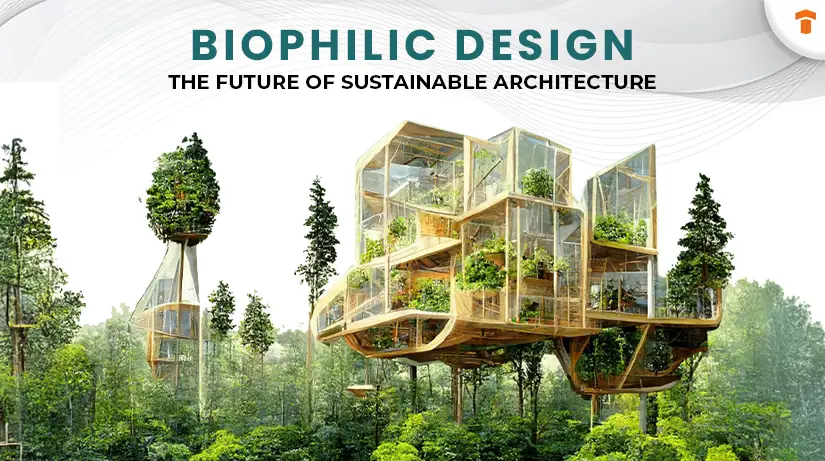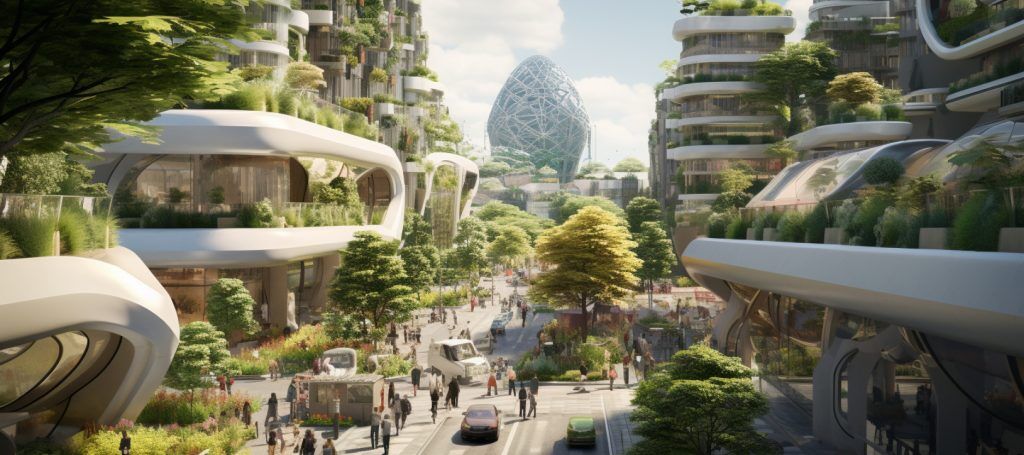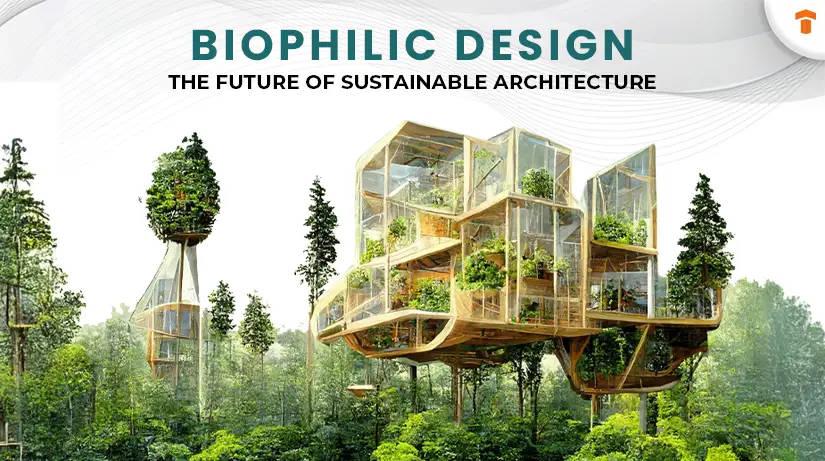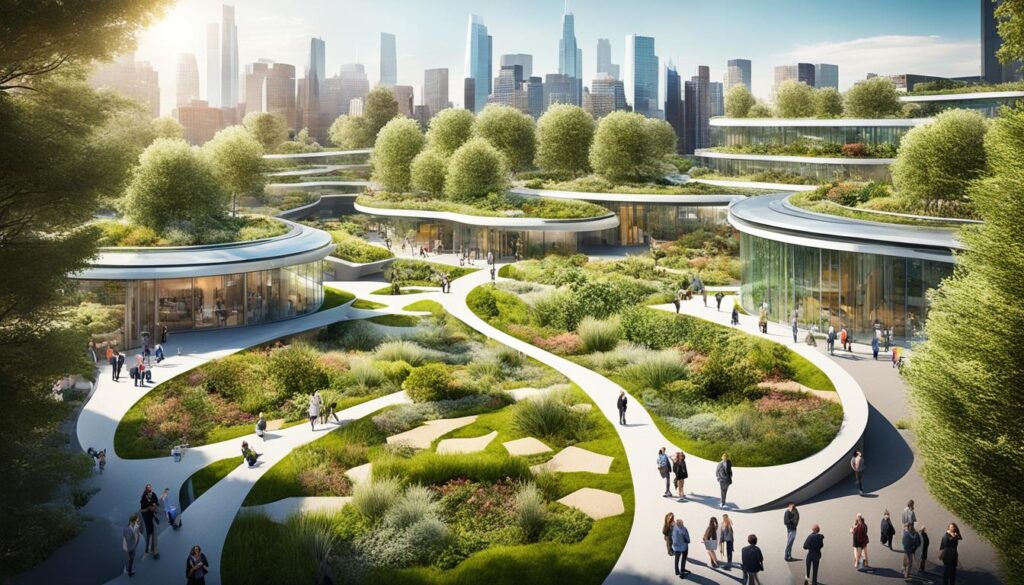Boost Energy Savings with Biophilic Design: A Sustainable Solution
As the global community confronts the challenges posed by climate change and the pressing necessity for sustainable practices, biophilic design emerges as a significant contributor to energy conservation.
This approach involves the seamless integration of nature into our built environments, which not only enhances aesthetics but also optimizes energy efficiency. By utilizing natural light and renewable energy sources, biophilic design provides strategies that are advantageous for both the environment and human well-being.
An exploration of this design philosophy reveals its potential to transform spaces, reduce energy costs, and foster healthier living environments.
Why Is Biophilic Design Important for Energy Conservation?
Biophilic design plays a crucial role in energy conservation by integrating natural elements and promoting sustainability within the realm of architecture. This approach not only enhances human well-being but also minimizes ecological impact.
By incorporating features that foster a connection between occupants and nature, such as natural lighting, environmentally friendly building materials, and restorative spaces, biophilic design elevates the aesthetic value of a structure while significantly contributing to energy savings and effective resource management.
How Does Biophilic Design Conserve Energy?
Biophilic design plays a crucial role in energy conservation through a range of strategies that optimize natural resources and enhance building performance. This includes the strategic implementation of daylighting, passive design techniques, and the integration of indoor plants.
Such elements not only enhance thermal comfort and air quality but also contribute to a reduction in the energy footprint. These practices align with sustainability objectives and promote effective energy management.
1. Natural Lighting
Natural lighting is an essential element of biophilic design that significantly enhances energy efficiency and occupant comfort by optimizing daylight within interior environments. By employing design principles that increase exposure to sunlight, buildings can diminish their dependence on artificial lighting, thereby reducing energy consumption and elevating the overall aesthetic quality of indoor spaces.
The effective utilization of daylight plays a vital role in promoting the psychological well-being of occupants, fostering a sense of connection with nature that can enhance productivity and lower stress levels. In the realm of sustainable architecture, strategic design techniques such as the incorporation of skylights, expansive windows, and open floor plans not only maximize natural light but also contribute to a healthier indoor climate.
This integration of architectural design and natural elements supports a sustainable lifestyle, facilitating energy savings while simultaneously improving the quality of life for individuals residing in these carefully designed spaces.
2. Passive Heating and Cooling
Passive heating and cooling techniques are fundamental components of biophilic design, as they utilize natural processes to regulate indoor climates, thereby enhancing energy efficiency and occupant comfort. This approach reduces the reliance on mechanical systems, which leads to lower energy costs and a diminished carbon footprint, while also promoting principles of ecological design.
By thoughtfully considering building orientation, designers can effectively harness sunlight and prevailing winds to optimize thermal comfort throughout the year. For example, the strategic placement of windows can maximize daylight while minimizing heat gain, thereby reducing dependence on artificial lighting and cooling systems.
The incorporation of thermal mass—elements that absorb, store, and subsequently release heat—can contribute to stabilizing indoor temperatures, resulting in a more pleasant and consistent environment. These techniques not only support sustainability objectives but also provide psychological benefits by fostering a sense of well-being and a connection to the natural environment, which is a vital element of holistic living.
3. Use of Natural Materials
The incorporation of natural materials in biophilic design plays a crucial role in promoting sustainability by minimizing the ecological impact of construction while simultaneously enhancing the health benefits for occupants. The use of materials such as wood, stone, and other sustainable options not only supports resource conservation but also cultivates a profound connection between the indoor environment and the natural world.
These elements introduce warmth, texture, and authenticity to spaces, significantly enriching their aesthetic appeal and creating inviting atmospheres. Furthermore, research indicates that natural textures and colors can effectively reduce stress and improve overall mood, thereby contributing to occupant wellness.
By responsibly sourcing materials, developers and designers not only adhere to sound resource management practices but also create environments that inherently nurture psychological well-being. The presence of natural elements is known to inspire creativity and productivity, rendering such spaces highly desirable for both residential and commercial use.
Ultimately, the deliberate integration of natural materials serves as a pathway to fostering a deeper appreciation for the environment while promoting healthier and more fulfilling lifestyles.
4. Green Roofs and Walls
Green roofs and walls represent innovative biophilic design elements that significantly enhance biodiversity while contributing to energy efficiency in buildings. These living structures provide insulation and reduce energy consumption while also creating urban greenery, thus fostering a healthier and more visually appealing environment.
The incorporation of such nature-based solutions offers numerous advantages for urban communities. For example, they play a crucial role in improving air quality by filtering pollutants and capturing carbon dioxide, ultimately resulting in cleaner and healthier air for both occupants and pedestrians.
Moreover, green roofs and walls serve as essential habitats for various species, supporting local flora and fauna amidst urban development. This integration of ecological elements into urban design not only encourages wildlife but also engages residents and workers, fostering a deeper connection to nature.
Additionally, the aesthetic value of these green spaces can significantly enhance the overall ambiance of an area, promoting mental well-being and encouraging social interaction.
5. Natural Ventilation
Natural ventilation is a critical component of biophilic design that enhances indoor air quality while promoting energy efficiency and occupant comfort. By strategically designing openings and airflow pathways, buildings can achieve effective ventilation with minimal reliance on mechanical systems, thereby reducing energy consumption.
This approach not only improves building performance but also creates a psychologically restorative environment for occupants. Enhanced air circulation leads to significant health benefits, including a decrease in respiratory issues, improved concentration, and an overall enhancement of mood.
By leveraging natural forces such as wind and buoyancy, effective natural ventilation can significantly reduce the dependence on energy-intensive heating and cooling systems. As a result, this practice not only lowers operational costs but also diminishes the overall carbon footprint, making it a sustainable choice in contemporary architecture.
6. Use of Renewable Energy Sources
Incorporating renewable energy sources into biophilic design is a crucial strategy for implementing sustainable practices and optimizing energy performance. By utilizing solar panels, wind turbines, and other renewable resources, buildings can significantly reduce their carbon footprint while enhancing overall energy management.
This approach not only aligns with principles of ecological design but also encourages community engagement, as individuals are motivated to participate in sustainability initiatives.
The integration of systems such as geothermal heating and biomass energy further reinforces a proactive commitment to reducing energy consumption. An increased reliance on renewable energy sources can also stimulate local economies and inspire a shift in public perception regarding sustainable living.
Ultimately, these innovations contribute to a future where buildings positively impact their environment, fostering a culture of sustainability that benefits both the planet and its inhabitants.
What Are the Benefits of Biophilic Design for Energy Conservation?
The benefits of biophilic design for energy conservation are comprehensive, including enhanced occupant comfort, improved environmental design, and significant energy savings.
By promoting a deeper connection with nature through the incorporation of natural elements and sustainable practices, biophilic design not only enhances the quality of indoor environments but also contributes to overall sustainability and ecological impact.
1. Reduced Energy Costs
One of the primary advantages of biophilic design is its potential to reduce energy costs through enhanced energy efficiency and effective energy management strategies. By conducting thorough energy audits and implementing sustainable practices, building owners can achieve significant energy savings over time.
This approach not only promotes a healthier environment but also facilitates smart resource utilization and results in lower utility expenses. For example, optimizing natural light and ventilation can significantly decrease reliance on artificial lighting and climate control systems, thereby minimizing overall energy consumption.
Additionally, integrating energy-efficient appliances and materials that support sustainable living further amplifies the financial benefits of biophilic design. These innovations contribute to the creation of spaces that not only lower operational costs but also positively impact the environment, providing a compelling rationale for property owners to adopt this eco-conscious design philosophy.
2. Improved Indoor Air Quality
Biophilic design significantly contributes to the enhancement of indoor air quality, which is essential for occupant comfort and overall health benefits. By optimizing natural ventilation and integrating vegetation within indoor environments, buildings can markedly improve air quality, fostering a healthier atmosphere for users.
Natural ventilation systems are critical in this regard, as they facilitate airflow by allowing fresh outdoor air to circulate while expelling stagnant indoor air. This process not only reduces the concentration of indoor pollutants but also aids in regulating temperature and humidity levels.
Incorporating a diverse array of plants within the design serves multiple functions; in addition to their aesthetic value, plants function as natural air purifiers, absorbing harmful toxins and releasing oxygen.
This results in a more vibrant environment that enhances mood and overall well-being, thereby underscoring the significant relationship between environmental design and the health benefits for occupants.
3. Increased Productivity and Well-being
Increased productivity and well-being are significant advantages of biophilic design, as it positively impacts psychological benefits and occupant engagement. By establishing restorative spaces that connect individuals with nature, biophilic design enhances mental health and overall satisfaction within indoor environments.
This design approach is grounded in the principles of environmental psychology, illustrating that natural elements—such as greenery, natural light, and water features—can have a profound effect on individuals’ moods and cognitive functions.
Sensory experiences are vital; the visual, auditory, and olfactory attributes of nature can evoke feelings of calmness and restoration. Consequently, occupants frequently report reduced stress levels and heightened focus, which subsequently fosters creativity and collaboration.
Ultimately, by incorporating these elements into workspaces, biophilic design creates an environment that not only promotes productivity but also nurtures the well-being of its inhabitants.
4. Reduced Carbon Footprint
Biophilic design significantly contributes to reducing the carbon footprint by promoting energy conservation and sustainable practices throughout the building lifecycle. This ecological design approach minimizes environmental damage and supports responsible resource management.
By integrating natural elements into urban environments, this strategy not only enhances aesthetic appeal but also fosters a deeper connection between individuals and nature. Consequently, occupants experience improved well-being, which is correlated with increased productivity and energy efficiency.
Biophilic design advocates for the use of renewable resources and innovative technologies, illustrating that aesthetics can be harmonized with functionality.
The broader implications for climate resilience are substantial, as energy-efficient strategies embedded within this framework assist in mitigating the effects of climate change, ultimately guiding us toward a more sustainable future.
How Can Biophilic Design Be Incorporated into Buildings?
Incorporating biophilic design into buildings entails the implementation of various strategies that prioritize the integration of natural elements and accessibility to nature, thereby transforming indoor environments into spaces that enhance well-being and sustainability.
Through the application of deliberate design principles, architects can develop structures that establish a connection between occupants and the surrounding landscape, fostering a greater appreciation for the natural environment.
1. Incorporating Natural Elements
Incorporating natural elements into architectural designs is a fundamental principle of biophilic design that enhances both aesthetic value and sensory experience. By strategically integrating flora and fauna within indoor environments, designers can create spaces that evoke a sense of tranquility and foster a connection to the natural world.
This approach includes the deliberate use of indoor plants, which not only purify the air but also contribute to improved mood and productivity. Water features, such as indoor fountains or aquariums, serve to calm the mind and provide soothing sounds that promote relaxation.
The application of natural materials, such as wood, stone, and earth tones, further establishes a warm and inviting atmosphere that supports psychological well-being. These elements cultivate environments that enhance wellness, encouraging both physical health and a positive mindset for individuals who inhabit these thoughtfully designed spaces.
2. Designing for Views of Nature
Designing for views of nature is a fundamental aspect of biophilic design that significantly enhances the aesthetic value of indoor environments and fosters occupant engagement. By strategically orienting windows and outdoor spaces to maximize visual connections with nature, designers can create restorative environments that promote a sense of peace and well-being.
These deliberate design choices not only enhance the visual appeal of spaces but also contribute to improved mental health and productivity among individuals. Access to natural scenery has been associated with reduced stress levels and increased feelings of happiness, underscoring the importance for designers to integrate these elements into their projects.
Incorporating natural light and greenery into design plans can enhance cognitive function and creativity, resulting in a more dynamic and invigorating atmosphere. Ultimately, prioritizing aesthetic considerations alongside access to nature can transform spaces into thriving centers of innovation and tranquility.
3. Creating Biophilic Spaces
Creating biophilic spaces necessitates a comprehensive design approach that prioritizes occupant comfort and energy efficiency while fostering a strong connection with nature. Such spaces are distinguished by their thoughtful layouts, the use of natural materials, and the integration of light and greenery, all of which contribute to enhanced well-being and sustainability.
Key design strategies can significantly amplify these benefits.
- For instance, implementing open floor plans facilitates movement and interaction while maximizing the flow of natural light.
- Additionally, the integration of green infrastructure, such as living walls and green roofs, not only improves air quality but also establishes a visual connection to nature, thereby promoting mental health.
Ensuring adequate natural ventilation enhances air circulation, thereby diminishing reliance on artificial systems and conserving energy. By considering these elements, designers can create environments that evoke tranquility, ultimately benefiting both occupants and the broader ecosystem.
4. Integrating Technology
The integration of technology into biophilic design can significantly enhance energy management and optimize the utilization of renewable resources, leading to the development of smarter buildings that foster sustainability. By employing advanced technologies, such as smart sensors and automated systems, architects can improve the interaction between occupants and their natural environments while simultaneously enhancing overall building performance.
These innovative solutions not only facilitate real-time monitoring and adjustment of energy consumption but also promote a heightened sense of well-being among occupants through improved air quality and increased exposure to natural light.
The incorporation of interactive displays and mobile applications enables personalized climate control and provides feedback on energy usage, thereby encouraging occupants to actively participate in sustainable practices.
Such strategies create an ecosystem in which technology and nature coexist harmoniously, underscoring the significance of green spaces within urban settings while maximizing operational efficiency and occupant satisfaction.
What Are Some Examples of Biophilic Design in Action?
Numerous examples of biophilic design illustrate the effectiveness of integrating natural elements within the built environment, showcasing sustainable architectural practices and energy conservation methods.
These case studies emphasize innovative designs that effectively combine natural features with contemporary construction techniques, ultimately enhancing occupant experience and improving environmental performance.
1. The Bullitt Center
The Bullitt Center, often recognized as the greenest commercial building in the world, serves as a prime example of biophilic design through its comprehensive commitment to energy efficiency and sustainable practices. Situated in Seattle, this building integrates renewable energy sources, green roofs, and natural ventilation systems, thereby establishing a harmonious balance between architecture and nature.
Its innovative energy management systems are pivotal, utilizing an extensive array of solar panels that generate more energy than the building consumes. Furthermore, the large, strategically positioned windows facilitate ample natural light, minimizing reliance on artificial lighting while enhancing occupants’ connection to the outdoors.
This deliberate incorporation of biophilic elements not only cultivates a healthier work environment but also sets a standard for sustainable urban design, demonstrating how modern architecture can effectively prioritize both environmental stewardship and occupant well-being.
2. The Edge
The Edge, situated in Amsterdam, serves as an exemplary model of biophilic design that merges innovative architecture with cutting-edge energy performance features to enhance occupant comfort. This building effectively utilizes extensive natural lighting, incorporates green elements, and employs smart technology to establish a productive and healthy workspace.
The integration of sustainable practices, such as rainwater harvesting and solar panels, not only reduces the environmental impact but also results in substantial energy savings. The use of reclaimed materials in its construction further elevates the building’s eco-friendly profile, while the incorporation of vertical gardens and living walls fosters a connection to nature, thereby promoting the well-being of its occupants.
Advanced climate control systems and intelligent building management optimize temperature and air quality, further enriching the experience for those who utilize this innovative space. Collectively, these design elements highlight The Edge’s commitment to sustainability and occupant engagement.
3. The Amazon Spheres
The Amazon Spheres exemplify an exceptional application of biophilic design, wherein the integration of nature plays a critical role in promoting employee well-being and enhancing biodiversity. These interconnected glass domes host a diverse collection of plant species, creating a distinctive environment that encourages creativity and connection to the natural world.
Within this innovative space, employees benefit from a calming ambiance that not only enhances productivity but also supports mental health. The meticulously curated flora demonstrates a commitment to ecological balance, showcasing various species that contribute to the overall sustainability of the ecosystem.
By engaging with this verdant environment, individuals gain a deeper understanding of biodiversity and its essential role in fostering a thriving workplace. The Spheres transcend mere architectural achievement; they embody a comprehensive approach to enhancing employee experiences while emphasizing the importance of environmental stewardship.
4. The School of the Arts Singapore
The School of the Arts Singapore exemplifies biophilic design within an educational context, where nature-inspired architecture enhances both creativity and energy efficiency. This remarkable structure incorporates natural elements, such as light wells and landscaped terraces, to create learning environments that foster artistic expression and well-being.
The integration of natural materials and open spaces promotes a strong connection to the outdoors, thereby enriching the overall learning experience. By facilitating students’ interaction with their surroundings, this design not only improves air quality but also elevates mood and motivation.
The carefully designed communal areas encourage collaboration and social interaction among students, contributing to a more vibrant and engaging school culture. This environment nurtures artistic talents while instilling a lifelong appreciation for nature, ultimately shaping well-rounded individuals who excel across various dimensions of life.
Frequently Asked Questions
What is biophilic design?
Biophilic design is an approach to architecture and interior design that focuses on incorporating natural elements into human-made spaces to create a connection with nature. This includes incorporating natural light, plants, and other natural materials into the design.
How does biophilic design promote energy conservation?
Biophilic design promotes energy conservation by utilizing natural elements to reduce the need for artificial lighting, heating, and cooling. This not only reduces energy consumption but also creates a more comfortable and healthy environment for occupants.
What are some examples of biophilic design elements that can help conserve energy?
Examples of biophilic design elements that can help conserve energy include large windows for natural light, green walls for insulation, and natural ventilation systems. Additionally, incorporating natural materials such as wood and stone can also help regulate temperature and reduce the need for heating and cooling.
Can biophilic design be incorporated into existing buildings?
Yes, biophilic design can be incorporated into existing buildings through retrofitting. This can include adding green walls, skylights, or incorporating natural materials into the interior design. Even small changes, like adding potted plants or incorporating natural lighting, can have a positive impact on energy conservation.
Is biophilic design only beneficial for energy conservation?
No, biophilic design has numerous benefits beyond energy conservation. It has been shown to improve overall well-being and productivity, reduce stress and anxiety, and increase creativity and focus. By promoting a connection with nature, biophilic design can improve the overall quality of life for occupants.
Are there any drawbacks to biophilic design?
The main drawback of biophilic design is the potential cost. Incorporating natural elements and retrofitting existing buildings can be expensive. However, the long-term benefits, such as energy conservation and improved well-being, often outweigh the initial cost. Additionally, there are ways to incorporate biophilic design on a smaller scale that can still have a positive impact.

I’m Bruno, an architect with a deep passion for Biophilic Design in Urban Architecture. Throughout my career, I’ve focused on integrating natural elements into urban planning, and I created this site to share my insights and foster a deeper understanding of how biophilic principles can significantly enhance urban living. Dedicated to sustainable development, I continually explore innovative design solutions that promote both environmental and human well-being in city landscapes.














Publicar comentário